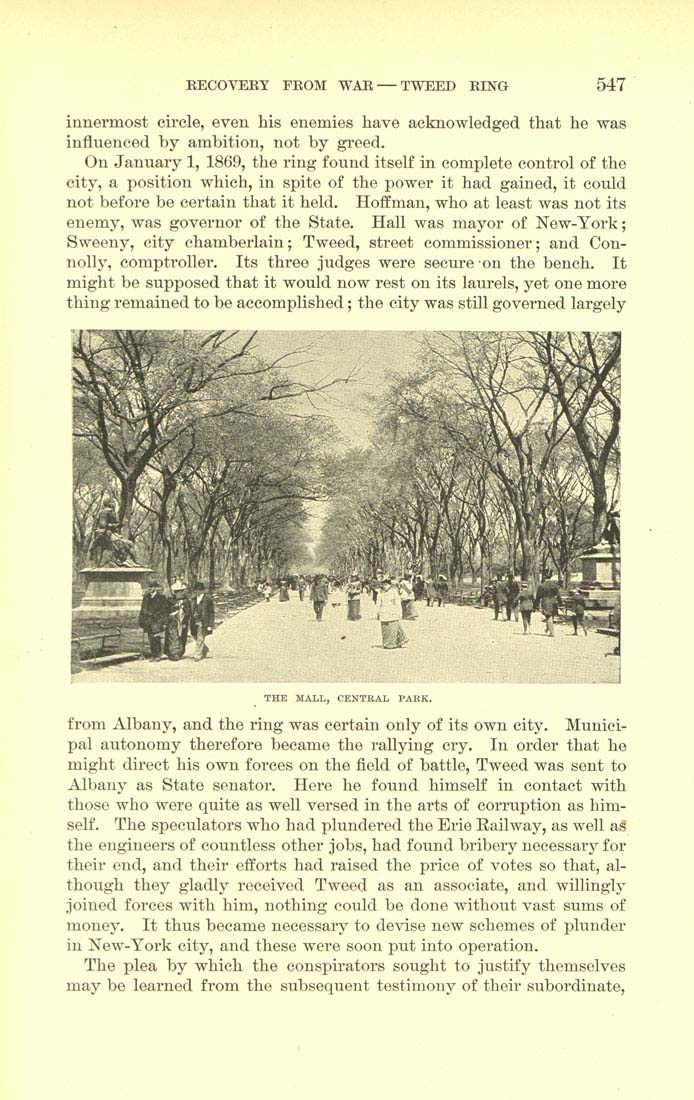RECOVERY FROM WAR — TWEED RING
547
innermost circle, even his enemies have acknowledged that he was
influenced by ambition, not by greed.
On January 1, 1869, the ring found itself in complete control of the
city, a position which, in spite of the power it had gained, it could
not before be certain that it held. Hoffman, who at least was not its
enemy, was governor of the State. Hall was mayor of New-York;
Sweeny, city chamberlain; Tweed, street commissioner; and Con¬
nolly, comptroller. Its three judges were secure-on the bench. It
might be supposed that it would now rest on its laurels, yet one more
thing remained to be accomplished; the city was still governed largely
THE MALL, CENTRAL PARK.
from Albany, and the ring was certain only of its own city. Munici¬
pal autonomy therefore became the rallying cry. In order that he
might direct his own forces on the fleld of battle, Tweed was sent to
Albany as State senator. Here he found himself in contact with
those who were quite as well versed in the arts of corruption as him¬
self. The speculators who had plundered the Erie Railway, as well as
the engineers of countless other jobs, had found bribery necessary for
their end, and their efforts had raised the price of votes so that, al¬
though they gladly received Tweed as an associate, and willingly
joined forces with him, nothing could be done without vast sums of
money. It thus became necessary to devise new schemes of plunder
in New-York city, and these were soon put into operation.
The plea by which the conspirators sought to justify themselves
may be learned from the subsequent testimony of their subordinate.
|








